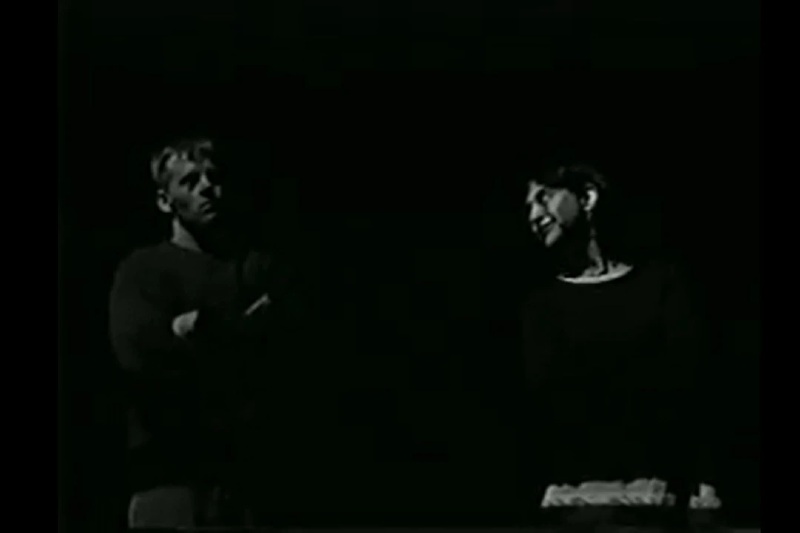Technological horror is a constantly evolving subgenre; because of its relationship to science and innovation, it has to be. Our fears aren’t fixed points, and as technology advances, events like Y2K or the ill-defined “dark web” lose their power. The reverse can also be true. As we wade further into a world where “phones” mean the thing in our pocket and not the thing on our wall, our anxieties around them evolve. Something that was once an eye-rolling condemnation of a harmless device can start to look prescient. Such is the case with 2016’s Cell, a film that unwittingly captures our very modern phone-related dread.
Adapted from Stephen King’s 2006 novel of the same name — and co-written by King himself — Cell is an apocalyptic, zombie-adjacent, tech nightmare. Its potpourri quality makes it a challenge to both connect with and categorize. But if you strip away comparisons to the source material and drill into the technological paranoia, Cell reveals itself as a stellar example of cell phone horror.
The film opens on Clay Riddell (John Cusack) as he traverses a crowded Boston airport. Everyone around him is on their phone. This is clearly the setup for a big bang of an opening; there’s a vague sense that the tableau could degrade into a finger-waving indictment of our inability to connect with people right in front of us. Except it doesn’t evoke those feelings. The phones look commonplace, the scene familiar and relatable, and that only serves to make the coming melee more jarring.
Without warning, a signal pours from the cell phones and everyone using one is instantly turned into a mindlessly violent monster. Zombie-like, the newly-turned people foam at the mouth as they chase down victims. Riddell is only saved because his battery died — by happenstance as opposed to a pious rejection of the tech that would become the world's downfall. This is another point where the film could level its judgment at characters and viewers alike, yet doesn’t.
Cell plays a lot like The Stand, with elements of countless other King works woven into the narrative. On his trek to find his son, Riddell meets other survivors, most notably Tom McCourt (played by Samuel L. Jackson), but also Isabelle Fuhrman (Orphan), Stacy Keach, and Owen Teague (It, The Stand). The threat escalates as the signal — or “pulse” — becomes transmittable through the mouths of the already infected. There are also shared dreams of a man in a red hoodie, a man Riddell had been drawing long before the pulse.
As I rush through these plot points, I can recognize where this film is ineffective. Too much time is spent in the wrong places, and at 90 minutes, it somehow feels both drawn-out and rushed. Common in-world parlance like “phoner” and “pulse” show up with seemingly no natural development. The man in the hoodie is introduced inefficiently, and there is virtually no exploration of the apparent hive mind present in both the afflicted and yet-to-be. This could be blamed on — or explained away by — the existence of a much more dense source material. But these things only keep this movie from achieving sublime greatness.
But even with its issues, Cell still manages to brush against something wonderful. The true terror, and the most relevant of the film’s themes, are the phones and our wide-eyed reliance on them. Cell presents a world in which mobile phones act as gateways, allowing dangerous things to slip in as we recklessly open up. Despite its late 2010’s release, the film depicts phones as simple devices for making convenient phone calls. The limited scope of the technology looks quaint and innocuous given how truly entangled with our devices we’ve become.
It goes without saying that modern phone use is actually much different, with many of us renouncing the call-making features all together. But they’re still a major part of modern life, their glowing windows allowing insidious attacks from darkened corners of the internet. If you view the titular “cell” as a modern smartphone, the paranoia, fear, and violence becomes relevant again. In a way, Cell is accidentally about the dangers of social media, something that’s become intrinsically tied to phone use.
But instead of updating its tech, Cell plays out like a period piece. The mobile devices in use aren’t reflective of its 2016 release date, the same year that saw the debut of the iPhone 7. Still, the idea of people being whipped into a frenzy and infecting those around them feels like an on-the-nose indictment of Facebook and other online platforms used for various kinds of indoctrination. The fact that it doesn’t appear intentional is fascinating.
Cell’s main protagonists are middle-aged men. While that’s not at all uncommon in King’s works, the disaster genre, or tech horror in general, it is an oddity in phone/social media horror. Friend Request, released the same year, is explicitly about the terror of social media; its protagonists are young women. Countdown, #Horror, and Cam are all cautionary tales about the dangers of being online, and they all focus on young women. Even analog phone horror like When a Stranger Calls, and The Caller present “being on the phone” as something inherently feminine. Having men at the center of a story like Cell manages to be unique and subversive in a subgenre that seems intent on making phone use, and everything that goes along with it, something “for girls.”
There’s a sense of nihilism at work in Cell that feels particularly poignant when paired with a social media allegory. A pervasive sensation of hopelessness runs through the film, a feeling that nothing matters — that the path is already decided. Riddell is essentially positioned as a savior, the one who can see the truth and thus defeat evil, which is represented literally as the man in the red hoodie. (It’s interesting to note that Red Hoodie, or the “Raggedy Man,” looks like a twenty-something kid, an archetype we often see employed as the evil behind a screen, stealing our data and hacking T-Mobile.) Except, Red Hoodie is multiple steps ahead of Riddell, and it’s quickly clear his pilgrimage to save his son was pointless. He too becomes infected, and he joins the pulsating swarm of humans, now reduced to nothing more than transmitters. A faceless mass of energy. A horde.
It’s an unflinchingly bleak ending made only more grim by the quick glimpse we get into Riddell’s mind. In it we see that even as he runs with the pack of blank-faced infected, Riddell imagines himself with his son, traveling to catch up with McCourt and the remaining survivors of his group. He may be lost to the waking world, but his internal life reflects the most fulfilling outcome. Because of this, we’re left with an ending that, while absolutely somber and upsetting, is also comforting. Despite the tragedy that’s claimed his family, Riddell can still be with them in the ether.
A wonderful thing about stories is that they live outside of time. And while Cell will never be a film about social media’s insidious underbelly, it absolutely is. Like the pulse, the internet — and all its trappings — are an unmatched force with untold power over us. And while Riddell inevitably fails in his quest to save his son and the world, maybe in a true I Am Legend twist, he wasn’t meant to. Perhaps the pulse is just the next stage in our relationship with technology.







